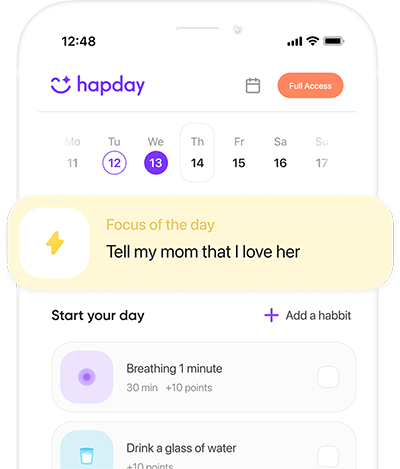Autism Spectrum Disorder (ASD) isn’t just a series of symptoms on a list, it’s a part of someone’s life—a complex neurodevelopmental condition that spills over into social interaction, communication, and behavior. What the CDC said? They reported, in numbers, that roughly 1 in 54 kids in the United States—imagine that classroom filled with kids—gets this diagnosis. That’s a blink-of-an-eye 3% increase over the last ten years. With this rising tide of awareness, learning about the challenges people with ASD face and discovering effective coping methods is absolutely crucial. It’s especially true for Generation Z and Millennial women, often caregivers or those grappling with ASD themselves.
Table of Contents
- Key Challenges of ASD
- Social Interaction Difficulties
- Communication Barriers
- Repetitive Behaviors and Routines
- Coping Strategies for ASD
- Support Systems and Community Involvement
- Conclusion
Key Challenges of ASD
Social Interaction Difficulties
When it comes to social dealings, individuals with ASD may struggle—big time. They often can’t seem to get the hang of social cues, avoid eye contact, or partake in the usual back-and-forth of conversations. A study in the Journal of Autism and Developmental Disorders paints a picture: about 70% of those with ASD encounter these social interaction hurdles, which can lead (unsurprisingly) to isolation and anxiety. It’s like being at a party where you know no one.. and can’t find the exit.
Communication Barriers
ASD often brings communication barriers to the forefront. Delayed speech or being non-verbal isn’t just a hurdle—it’s a wall. According to the National Institute on Deafness and Other Communication Disorders, around 40% of children with ASD don’t speak at all, while 25-30% might gain some words in early childhood, only to lose them again later on. Using alternative ways to communicate, like sign language or communication devices, is a must, but finding the right fit can feel impossible sometimes, doesn’t it?
Repetitive Behaviors and Routines
And then there are the repetitive behaviors, vital as breathing for many with ASD, coupled with the need for routines. This love for sameness isn’t just a quirk—it’s a lifeline. Any disruption can feel like being tossed into chaos, leading to anxiety or repeated meltdowns. The International Journal of Environmental Research and Public Health notes that these behaviors often serve as coping tools. They provide predictability—the safe harbor in a stormy sea of sensory overload.
Coping Strategies for ASD
Developing Consistent Routines
Creating consistent daily routines can shave off stress for those with ASD like nothing else. Predictability? It eases the tension of change and helps manage expectations. Caregivers and individuals often use visual schedules or apps to line up their days. On a side note, Hapday proves invaluable for tailoring routines to individual preferences.
Enhancing Communication Skills
Speech therapy combined with Alternative and Augmentative Communication (AAC) devices does wonders for enhancing communication skills. The American Journal of Speech-Language Pathology found that tailored AAC strategies improve communication effectiveness in 70% of cases. And let’s not forget the role of non-verbal communication. Gestures or pictures can be the bridge over troubled waters.
Building Social Skills
Improving interactions with peers? Social skills training can be a game-changer. Role-playing, social stories, and group activities boost comprehension of social norms and cues. Research underscores the importance of early intervention. The Pediatrics journal found a 17% increase in successful interactions among young ASD individuals with pre-five years old structured social training. That sounds massive, right?
Sensory Management Techniques
Individuals with ASD often react intensely to sensory inputs like lights, sounds, or textures. The solution? Sensory management techniques—noise-cancelling headphones, weighted blankets, or sensory-friendly spaces are some examples. Occupational therapists—a godsend—aim to offer customized strategies to help handle these sensitivities.
Encouraging Independence
Independence equals empowerment (at least in my book), so promoting independence through skill-building is a priority for individuals with ASD. Boosting autonomy can lead to enhanced self-esteem and confidence. Teaching life skills like self-care, cooking, or managing money endows individuals with the necessary tools for living independently. Research from the Journal of Autism and Developmental Disorders indicates that structured skill-building can increase adaptive functioning by a notable 15%.
Support Systems and Community Involvement
Building a solid support system? Absolutely pivotal for individuals with ASD and their families. Whether online or offline, support groups provide arenas to share experiences, advice, and resources. Getting involved in community activities or ASD-friendly events can decrease isolation and foster a sense of belonging. Well-known organizations like Autism Speaks or local advocacy groups are treasures of resources and support networks.
Conclusion
Understanding and managing ASD involves finding the right path—a tricky journey filled with challenges like social difficulties, communication barriers, and sensory issues. By integrating coping strategies such as routine consistency, improved communication, and social training, individuals with ASD can explore fulfilling and independent lives. As awareness grows and support systems strengthen, navigating this path becomes increasingly possible and hopeful for those affected by ASD. Feeling inspired? Give Hapday a whirl to tailor daily routines to your unique patterns and preferences.
References
- Centers for Disease Control and Prevention (CDC). Autism Spectrum Disorder (ASD). https://www.cdc.gov/ncbddd/autism/data.html
- The American Speech-Language-Hearing Association (ASHA). Augmentative and Alternative Communication (AAC). https://www.asha.org/public/speech/disorders/aac/
- International Journal of Environmental Research and Public Health. Repetitive Behaviors in Autism. https://www.mdpi.com/journal/ijerph
- Journal of Autism and Developmental Disorders. Social Skills Training for Autism. https://link.springer.com/journal/10803
- Pediatrics. Early Intervention and Autism Outcomes. https://pediatrics.aappublications.org/

